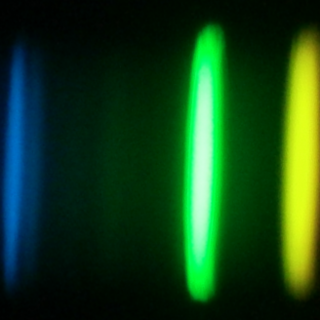Bibcode
Lewis, Hannah M.; Anguiano, Borja; Stassun, Keivan G.; Majewski, Steven R.; Arras, Phil; Sarazin, Craig L.; Li, Zhi-Yun; De Lee, Nathan; Troup, Nicholas W.; Allende Prieto, Carlos; Badenes, Carles; Cunha, Katia; García-Hernández, D. A.; Nidever, David L.; Palicio, Pedro A.; Simon, Joshua D.; Smith, Verne V.
Bibliographical reference
The Astrophysical Journal
Advertised on:
9
2020
Journal
Citations
9
Refereed citations
9
Description
Draco C1 is a known symbiotic binary star system composed of a carbon red giant and a hot, compact companion—likely a white dwarf—belonging to the Draco dwarf spheroidal galaxy. From near-infrared spectroscopic observations taken by the Apache Point Observatory Galactic Evolution Experiment (APOGEE-2), part of Sloan Digital Sky Survey IV, we provide updated stellar parameters for the cool, giant component, and constrain the temperature and mass of the hot, compact companion. Prior measurements of the periodicity of the system, based on only a few epochs of radial velocity data or relatively short baseline photometric observations, were sufficient only to place lower limits on the orbital period (P > 300 days). For the first time, we report precise orbital parameters for the binary system: with 43 radial velocity measurements from APOGEE spanning an observational baseline of more than 3 yr, we definitively derive the period of the system to be ${1220.0}_{-3.5}^{+3.7}$ <!-- --> days. Based on the newly derived orbital period and separation of the system, together with estimates of the radius of the red giant star, we find that the hot companion must be accreting matter from the dense wind of its evolved companion.
Related projects

Nucleosynthesis and molecular processes in the late stages of Stellar Evolution
Low- to intermediate-mass (M < 8 solar masses, Ms) stars represent the majority of stars in the Cosmos. They finish their lives on the Asymptotic Giant Branch (AGB) - just before they form planetary nebulae (PNe) - where they experience complex nucleosynthetic and molecular processes. AGB stars are important contributors to the enrichment of the
Domingo Aníbal
García Hernández

Chemical Abundances in Stars
Stellar spectroscopy allows us to determine the properties and chemical compositions of stars. From this information for stars of different ages in the Milky Way, it is possible to reconstruct the chemical evolution of the Galaxy, as well as the origin of the elements heavier than boron, created mainly in stellar interiors. It is also possible to
Carlos
Allende Prieto